| Shiva | |
|---|---|
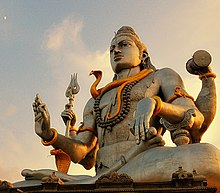 Statue of Lord Shiva at Murudeshwar | |
| Affiliation | Parabrahman (Shaivism), Trimurti, Deva, Ishvara |
| Abode | Mount Kailash |
| Mantra | Om Namah Shivaya |
| Weapon |
Trishula, Pashupatastra, Parashu (Axe), Rudra Astra, Pinaka (bow) |
| Symbols | Lingam |
| Mount | Nandi (bull) |
| Festivals | Maha Shivaratri, Shravan month |
| Personal information | |
| Consort | Parvati (identified with Kali/ Durga), Sati , Mohini |
| Children |
Lord Ganesha and Lord Kartikeya Regional: Lord Ayyappan (Lord Aiyanar, Shasta), Ashokasundari, Manasa, Vishnumaya and others |
Shiva (/??i?v?,
Shiva is the "destroyer of evil and the transformer" within the Trimurti, the Hindu trinity that includes Brahma and Vishnu. In Shaivism tradition, Shiva is the Supreme being who creates, protects and transforms the universe. In the tradition of Hinduism called Shaktism, the Goddess, or Devi, is described as supreme, yet Shiva is revered along with Vishnu and Brahma. A goddess is stated to be the energy and creative power (Shakti) of each, with Parvati (Sati) the equal complementary partner of Shiva. He is one of the five equivalent deities in Panchayatana puja of the Smarta tradition of Hinduism.
According to the Shaivism sect, the highest form of Shiva is formless, limitless, transcendent and unchanging absolute Brahman, and the primal Atman (soul, self) of the universe. There are many both benevolent and fearsome depictions of Shiva. In benevolent aspects, he is depicted as an omniscient Yogi who lives an ascetic life on Mount Kailash as well as a householder with wife Parvati and his two children, Ganesha and Kartikeya. In his fierce aspects, he is often depicted slaying demons. Shiva is also known as Adiyogi Shiva, regarded as the patron god of yoga, meditation and arts.
The iconographical attributes of Shiva are the serpent around his neck, the adorning crescent moon, the holy river Ganga flowing from his matted hair, the third eye on his forehead, the trishula as his weapon, and the damaru drum. He is usually worshipped in the aniconic form of Lingam. Shiva is a pan-Hindu deity, revered widely by Hindus, in India, Nepal and Sri Lanka.
Contents
Etymology and other names
The Sanskrit word "?iva" (Devanagari: ???, transliterated as Shiva or Siva) means, states Monier Monier-Williams, "auspicious, propitious, gracious, benign, kind, benevolent, friendly". The roots of ?iva in folk etymology are ?? which means "in whom all things lie, pervasiveness" and va which means "embodiment of grace".
The word Shiva is used as an adjective in the Rig Veda (approximately 1700–1100 BC), as an epithet for several Rigvedic deities, including Rudra. The term Shiva also connotes "liberation, final emancipation" and "the auspicious one", this adjective sense of usage is addressed to many deities in Vedic layers of literature. The term evolved from the Vedic Rudra-Shiva to the noun Shiva in the Epics and the Puranas, as an auspicious deity who is the "creator, reproducer and dissolver".
Sharma presents another etymology with the Sanskrit root ?arv-, which means "to injure" or "to kill", interprets the name to connote "one who can kill the forces of darkness".
The Sanskrit word ?aiva means "relating to the god Shiva", and this term is the Sanskrit name both for one of the principal sects of Hinduism and for a member of that sect. It is used as an adjective to characterize certain beliefs and practices, such as Shaivism.
Some authors associate the name with the Tamil word ?ivappu meaning "red", noting that Shiva is linked to the Sun (?ivan, "the Red one", in Tamil) and that Rudra is also called Babhru (brown, or red) in the Rigveda. The Vishnu sahasranama interprets Shiva to have multiple meanings: "The Pure One", and "the One who is not affected by three Gu?as of Prak?ti (Sattva, Rajas, and Tamas)".
Shiva is known by many names such as Viswanatha (lord of the universe), Mahadeva, Mahandeo, Mahasu, Mahesha, Maheshvara, Shankara, Shambhu, Rudra, Hara, Trilochana, Devendra (chief of the gods), Neelakanta, Subhankara, Trilokinatha (lord of the three realms), and Ghrneshwar (lord of compassion). The highest reverence for Shiva in Shaivism is reflected in his epithets Mah?deva ("Great god"; mah? "Great" and deva "god"), Mahe?vara ("Great Lord"; mah? "great" and ??vara "lord"), and Parame?vara ("Supreme Lord").
Sahasranama are medieval Indian texts that list a thousand names derived from aspects and epithets of a deity. There are at least eight different versions of the Shiva Sahasranama, devotional hymns (stotras) listing many names of Shiva. The version appearing in Book 13 (Anu??sanaparvan) of the Mahabharata provides one such list. Shiva also has Dasha-Sahasranamas (10,000 names) that are found in the Mahanyasa. The Shri Rudram Chamakam, also known as the ?atarudriya, is a devotional hymn to Shiva hailing him by many names.
Historical development and literature
The Shiva-related tradition is a major part of Hinduism, found all over India, Nepal, Sri Lanka, and Bali (Indonesia). Scholars have interpreted early prehistoric paintings at the Bhimbetka rock shelters, carbon dated to be from pre-10,000 BCE period, as Shiva dancing, Shiva's trident, and his mount Nandi. Rock paintings from Bhimbetka, depicting a figure with a trishul, have been described as Nataraja by Erwin Neumayer, who dates them to the mesolithic.
Indus Valley origins
Of several Indus valley seals that show animals, one seal that has attracted attention shows a large central figure, either horned or wearing a horned headdress and possibly ithyphallic, seated in a posture reminiscent of the Lotus position, surrounded by animals. This figure was named by early excavators of Mohenjo-daro as Pashupati (Lord of Animals, Sanskrit pa?upati), an epithet of the later Hindu deities Shiva and Rudra.
Sir John Marshall and others suggested that this figure is a prototype of Shiva, with three faces, seated in a "yoga posture" with the knees out and feet joined. Semi-circular shapes on the head were interpreted as two horns. Scholars such as Gavin Flood, John Keay and Doris Meth Srinivasan have expressed doubts about this suggestion.
Gavin Flood states that it is not clear from the seal that the figure has three faces, is seated in a yoga posture, or even that the shape is intended to represent a human figure. He characterizes these views as "speculative", but adds that it is nevertheless possible that there are echoes of Shaiva iconographic themes, such as half-moon shapes resembling the horns of a bull. John Keay writes that "he may indeed be an early manifestation of Lord Shiva as Pashu-pati", but a couple of his specialties of this figure does not match with Rudra. Writing in 1997, Srinivasan interprets what John Marshall interpreted as facial as not human but more bovine, possibly a divine buffalo-man.
The interpretation of the seal continues to be disputed. McEvilley, for example, states that it is not possible to "account for this posture outside the yogic account". Asko Parpola states that other archaeological finds such as the early Elamite seals dated to 3000-2750 BCE show similar figures and t
Watch movie Shiva online on Amazon
Watch movie Shiva online
Watch The Movie On PrimeSohni Mahiwal (1984) Full HD Movie Download
.jpg)
Taal Full HD Movie Download
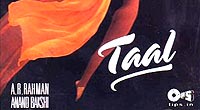
Singhasan Full HD Movie Download

Patthar Ke Insaan Full HD Movie Download

Party (2006) Full HD Movie Download
.jpg)
Chaand Ka Tukdaa Full HD Movie Download
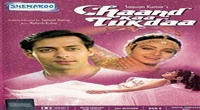
Haunted Full HD Movie Download

Kali Ghata (1980) Full HD Movie Download
.jpg)
Dhanare Rakhibu Sapatha Mora Full HD Movie Download
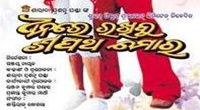
Azaad (1978) Full HD Movie Download
.jpg)
Yeh Hai Aurat Full HD Movie Download

Santan (1976) Full HD Movie Download
.jpg)
Siri Siri Muvva Full HD Movie Download
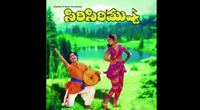
Bandya Ani Baby Full HD Movie Download

Jagan Mohini Full HD Movie Download
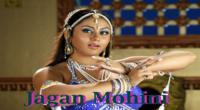
Due Date Full HD Movie Download

Mrugaya Full HD Movie Download

Manavaraali Pelli Full HD Movie Download
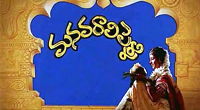
Nagastram Full HD Movie Download
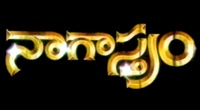
Manasa Full HD Movie Download

Inspector Bharya Full HD Movie Download
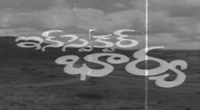
Download latest Movie from bollywood
- 1> baaghi 3
- 2> THE SKY IS PINK MOVIE FULL STORY AND REVIEW
- 3> Luka Chuppi
- 4> TO ALL THE BOYS I’VE LOVED BEFORE
- 5> Kabir Singh
- 6> Street Dancer 3D
- 7> Simmba
- 8> Gone Girl
- 9> The Girl Who Lived
- 10> Ludo
- 11> DILWALE DULHANIA LE JAYENGE
- 12> GUILTY
- 13> The Godfather
- 14> Adventures of Rusty
- 15> Sooryavanshi
- 16> Satyameva Jayate 2
- 17> Thappad
- 18> Bhool Bhulaiyaa 2
- 19> KGFChapter 2
- 20> Mardaani 2
- 21> Pinjar
- 22> Shivaji maharaj
- 23> Ek Villian 2
- 24> Hungama 2
- 25> Divergent
- 26> Mumbai Saga
- 27> The Internship
- 28> HIT (telugu)
- 29> Panga
- 30> The perfect date
- 31> 16 December
- 32> Gopala Gopala (Telugu)
- 33> Brahmastra
- 34> Gangubai Kathiawadi
- 35> Manmadhudu
- 36> Nenu local
- 37> Mahanati
- 38> Shatamanam bavathi
- 39> Lagaan
- 40> After
- 41> MOM
- 42> Shamshera
- 43> Raguvaran BTech
- 44> Khakee
- 45> The villain
- 46> OM
- 47> Mr. perfect
- 48> Bueatifull mind
- 49> Hichki
- 50> Gabbar Singh
- 51> Jogi
- 52> Before Sunrise
- 53> Before Sunset
- 54> Before Midnight
- 55> The Big Bull
- 56> Top Gun: Maverick
- 57> The Purge
- 58> The Sky is Pink
- 59> Laxmmi Bomb
- 60> Sadak 2
- 61> Sufna
- 62> Prithviraj
- 63> PK
- 64> Coolie No 1(2020)
- 65> Black Widow
- 66> Dear Zindagi
- 67> Dil Bechara
- 68> PHIR HERA PHERI
- 69> WAR
- 70> Dostana
- 71> RRR: Roudram Ranam Rudhiram
- 72> Maidan
- 73> Dabbang 3
- 74> Chhalaang
- 75> life as we know it
- 76> SherShaah
- 77> Sandeep Aur Pinky Faraar
- 78> Event Horizon
- 79> 83
- 80> Radhe: Your Most Wanted Bhai
- 81> Gunjan Saxena: The Kargil Girl
- 82> Mr India
- 83> Vivah
- 84> Anokha Bandhan
- 85> Ghost
- 86> Bhoot: Part One - The Haunted Ship
- 87> Haseen Dilruba
- 88> Laal Singh Chaddha
- 89> Qismat
- 90> Rajput
- 91> Drive
- 92> Dil Chahta Hai
- 93> Dil Ki Baazi
- 94> Dil Ka Rishta
- 95> Teesri Manzil
- 96> Dil
- 97> Love Aaj Kal
- 98> Khaali Peeli
- 99> Bunty Aur Babli 2
- 100> Atrangi Re
- 101> Gulabo Sitabo
- 102> Jodi
- 103> Suraj Pe Mangal Bhari
- 104> Deewana
- 105> Attack
- 106> Sardar Udham Singh
- 107> Toofan
- 108> THE LOVEBIRDS
- 109> Jersey
- 110> Ginny Weds Sunny
- 111> Thalaivi
- 112> Shiddat
- 113> Angels vs Zombies
- 114> Koi Mil Gya
- 115> Thank God
- 116> Bhuj: The Pride of India
- 117> Hum Aapke Hain Kaun
- 118> The Platform
- 119> Bird Box
- 120> Roohi Afzana
- 121> Torbaaz
- 122> Nikamma
- 123> World War Z
- 124> Extraction
- 125> Train to Busan
- 126> Life of Pi
- 127> SHAADI MEIN JROOR AANA
- 128> Himmat Aur Mehnat
- 129> To All The Boys: P.S. I Still Love You
- 130> Mimi
- 131> Good Newwz
- 132> Shubh Mangal Zyada Saavdhan
- 133> Raabta
- 134> Harry Potter and the Philosopher's Stone
- 135> Harry Potter and the Chamber of Secrets
- 136> Chhapaak
- 137> War of the Worlds
- 138> Harry Potter and the Prisoner of Azkaban
- 139> Harry Potter and the Goblet of Fire
- 140> MURDER MYSTERY
- 141> Shakuntala Devi
- 142> Bachchan Pandey
- 143> Jayeshbhai Jordar
- 144> Sheer Qorma
- 145> Saina
- 146> 'O' Pushpa I hate tears
- 147> Kedarnath
- 148> MS Dhoni The Untold Story
- 149> Chhichhore
- 150> Badhaai Ho
- 151> Unstoppable
- 152> Oz the Great And Powerful
- 153> The Girl on the Train
- 154> Haathi Mere Saathi 2020
- 155> The Conjuring: The Devil Made Me Do It
- 156> Gandhi Se Pehle Gandhi
- 157> The Song of Scorpions
- 158> Srimanthudu
- 159> Hello Guru Prema Kosame
- 160> Beauty and The Beast
- 161> Black Panther
- 162> Charlie and the Chocolate Factory
- 163> Bole Chudiyan
- 164> Fidaa
- 165> Duvvada Jagannadham
- 166> Bruce Lee: The Fighter
- 167> Hyper
- 168> Yaara
- 169> Red (2020)
- 170> Shivam
- 171> That Is Mahalakshmi
- 172> Nishabdham
- 173> Aashram 2020 web series
- 174> Laxmii
- 175> Mismatched
- 176> STUDENT OF THE YEAR 2
- 177> NAIL POLISH
- 178> Ramprasad Ki Tehrvi
- 179> KAAGAZ
- 180> 12 o Clock
- 181> The Power
- 182> bolo hau
- 183> Tribhanga
- 184> JAMUN
- 185> Madam Chief Minister
- 186> Maasaab
- 187> Aadhaar
- 188> Tanhaji
- 189> Bhaagi 3
- 190> Bhootnath
- 191> MALANG
- 192> Jai Mummy Di
- 193> Haathi Mere Saathi 2021
- 194> Shakeela
- 195> Unpaused
- 196> Annayya
- 197> Vamsoddharakudu
- 198> Mrugaraju
- 199> Narasimha Naidu
- 200> Sankranti
- 201> Manasu Maata Vinadhu
- 202> Anjaane
- 203> Apaharan
- 204> Bachke Rehna Re Baba
- 205> Bewafaa
- 206> Roohi
- 207> Radhe
- 208> Zindagi Khoobsoorat Hai
- 209> Yeh Mohabbat Hai
- 210> Yeh Kya Ho Raha Hai?
- 211> The Tomorrow War
- 212> DehradunDiary
- 213> Meri Shaadi Karaoo
- 214> Matruu Ki Bijlee Ka Mandola
- 215> No One Killed Jesica
- 216> Aag Ka Goola
- 217> Eight Million Dollars
- 218> Three Hundred
- 219> Cats and Dog
- 220> Decoy
- 221> Gold Rush
- 222> You Have Got Mail
- 223> Final Destination three
- 224> Tofan
- 225> Jungle
